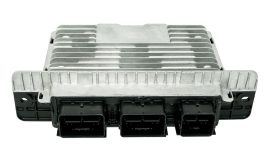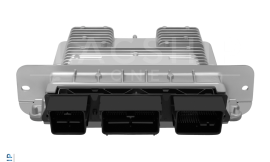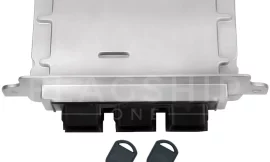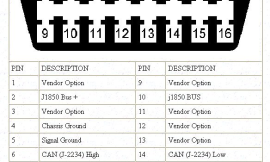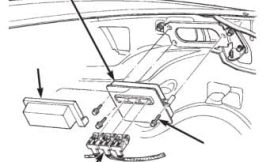Last updated on November 1st, 2024 at 04:14 pm
What exactly is an (ICM) Ignition Control Module?
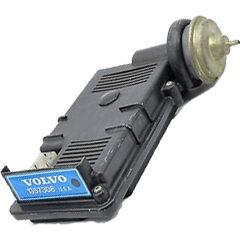
An Ignition Control Module (ICM) serves as a crucial switch, responsible for activating or deactivating the ignition system. Within the distributor lies a sensor that transmits a signal to the ICM. This signal triggers the ignition coil, generating sufficient energy to ignite the spark plugs.
It is imperative for the spark to possess the necessary strength to bridge the gap between the plugs, thus producing the voltage required to ignite the fuel/air mixture with precise timing. The ignition control module plays a vital role in ensuring the spark occurs precisely at the right cylinder and the perfect moment. If you seek a deeper understanding of the ignition process, we invite you to explore our forthcoming post.

Identifying the Ignition Control Module: A Comprehensive Guide
Locating the Ignition Control Module (ICM) can vary depending on the make, model, and year of your vehicle. It’s important to note that some cars may not have a separate ICM, as it could be integrated into the Engine Control Module (ECM), which is also known as the Powertrain Control Module (PCM) or Engine Control Unit (ECU). Before proceeding with the search, it’s advisable to consult your search engine to determine if your vehicle has an Integrated Electronic Ignition system to avoid unnecessary reading.
Typically, you can find the Ignition Control Module inside the distributor housing or mounted on the side of the engine compartment. It’s worth mentioning that once an engine module malfunctions, your vehicle will not run at all. However, the good news is that you can resolve this issue with simple tools and by following three straightforward tests.
By following these guidelines, you’ll be well-equipped to identify and address any issues related to the Ignition Control Module in your vehicle.
Testing an Ignition module is straightforward. Here’s what you’ll need:
- A Multimeter to measure electrical values.
- A wiring diagram of your vehicle (which can be found online).
- Wire Piercing probes for testing.
- A helper to crank the engine.
- A 12-volt test light for diagnostics.
- A replacement ignition switch.
This list provides a simple and cost-effective solution for your needs.
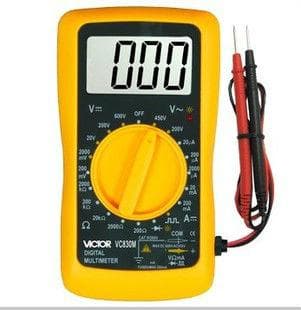
Step 1: First, check the current of your ignition control module (ICM). To do this, use the negative lead of your Digital Volt Ohm Meter (DVOM) and ground it to a metal part of your vehicle’s frame. It’s important to ensure that the ground connection is made on a metal surface. Next, ask someone to crank the engine while you test the different terminals for current. If no current is being passed to the terminals, unfortunately, you will need to replace the entire ignition control module. For reliable replacement Ignition control module
Step 2: Check the ICM Spark Plugs (ignition module) for current.
To determine the current of the spark plugs, grab a 12v test light and connect it to the terminals of the spark plugs. If the test light flickers consistently while cranking the engine, you can conclude that the spark plugs are in good working condition. However, if there is no current, further testing of other components in your vehicle is necessary. Keep reading for more information.
Step 3: Identify the problem.
If you find yourself in a situation where there is no current, it’s important to follow a systematic approach to troubleshoot and resolve the issue. Begin by meticulously inspecting each wire for any visible signs of damage, such as breaks, burnt marks, or fraying. These visual cues often serve as clear indicators of an underlying issue.
Once you have examined the wires, it’s time to employ your DVOM (Digital Volt-Ohm Meter) to test the ICM (Ignition Control Module) wires once again. Ensure that you are specifically testing the wires that connect the ignition control module to the spark plugs. If your DVOM continues to display an infinite reading, it is safe to conclude that the wires are indeed faulty.
In the event that the problem lies with the wires, replacing them should not pose too much of a challenge. You have the option to seek the assistance of a qualified mechanic or take on the rewarding task yourself.
However, if the issue does not pertain to the wiring or ignition coil and you find yourself in need of an ignition control module, consider yourself fortunate! At Flagship One, we take pride in offering the nation’s largest inventory of ignition control modules at the most reasonable prices. We invite you to explore our extensive store or get in touch with us at 516-766-2223. Our team of knowledgeable experts is always available to provide the assistance you need!
Frequently Asked Questions about Testing an Ignition Control Module
Question: Can you test an ignition control module?
Absolutely! Testing an ignition control module is definitely possible, and one of the fastest and most effective ways to do so is by using a multimeter. By measuring the electrical signals and resistance within the module, you can determine if it is functioning properly or if it requires further attention.
Question: What is the function of an ignition control module?
The ignition control module, also known as ICM, plays a crucial role in the ignition system of a vehicle. Acting as a switch, it controls the timing and distribution of high-voltage current to the spark plugs, enabling the combustion process to occur at the right moment. Essentially, the ICM ensures that the engine starts and runs smoothly, optimizing performance and fuel efficiency.
Question: How do you test an ignition control module in a GM vehicle?
Here are the steps to follow for testing an ignition control module in a GM vehicle:
Step 1: Check the current of your ICM by connecting a multimeter to the appropriate terminals and measuring the voltage output. This will help you determine if the module is delivering the necessary electrical signals.
Step 2: Verify the current of your spark plugs (ignition module) by testing the voltage at each plug wire. Consistent and appropriate spark plug firing is essential for optimal engine performance.
Step 3: Isolate the problem by inspecting other components of the ignition system, such as the distributor, coil, and wiring. Identifying any potential issues will help pinpoint the root cause of any ignition problems.
Question: How can I determine if my ignition control module is faulty?
If you suspect that your ignition control module is faulty, there are a few signs to look out for. One common indicator is a lack of current to or from the ICM, which can result in engine misfires, difficulty starting, or stalling. Additionally, a malfunctioning ICM may cause intermittent or complete loss of power to the ignition system. To accurately determine if your module is faulty, refer to our comprehensive guide and use a multimeter for thorough and precise testing.
Please let me know if there’s anything else I can assist you with!





